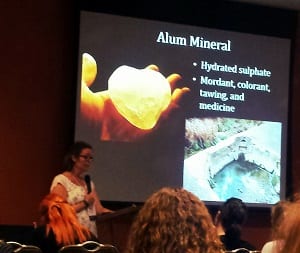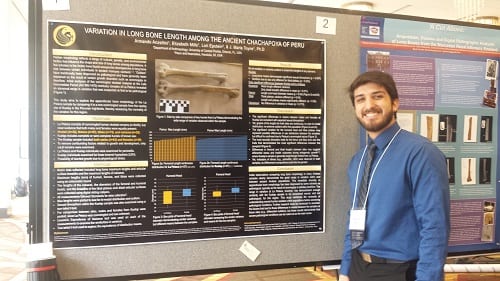Uncovering Award Winning Anthropology Research
At the Paleopathology Association Annual Meeting in St. Louis, Missouri this March, an instructor and a student from the anthropology department at the University of Central Florida received awards for their research presentations.
Archaeology instructor Amanda Groff won Best Student Podium Presentation for presenting her research from her doctoral dissertation. She is currently in the Anthropology Ph.D. program at the University of Florida in Gainesville.
She spent two years doing research for her project titled “The Road to Wellville: Investigating the Relationship between Migration and Leprosy in the Dakhleh Oasis, Egypt.”
In her research, she proposes an alternative hypothesis as to why there are foreign individuals with leprosy living and dying in the Dakhleh Oasis, Egypt.
“I used the oxygen stable isotope to identify the individuals with leprosy who are foreign, and argued that they migrated to access a mineral called alum,” Groff said. “This research is the first to make an inference which connects the context of the Dakhleh Oasis with alum, migration, and leprosy.”
Master’s student Armando Anzellini also took home an award. The Cockburn Student Prize for Best Student Poster was awarded to him for his presentation on determining the normal range in stature variation for the ancient Chachapoya culture (A.D. 800-1530) from the Northern Peruvian Andes.
“I was stunned when I won the prize, I couldn’t believe it,” Anzellini said. “I think I was more excited when Professor Groff won her prize, though, since it meant the UCF Department of Anthropology was gaining some recognition.”
Starting in May 2013, while still an undergraduate student, he collected data along with Dr. J. Marla Toyne and Lori Epstein. Beginning his master’s program at UCF in the fall of 2014 he decided to take on this project, which is the initial stage of his thesis looking at social complexity and identity in the Chachapoya.
He hopes to turn his poster into a manuscript for publication and have it published in the official journal for the paleopathology association, the International Journal of Paleopathology.


